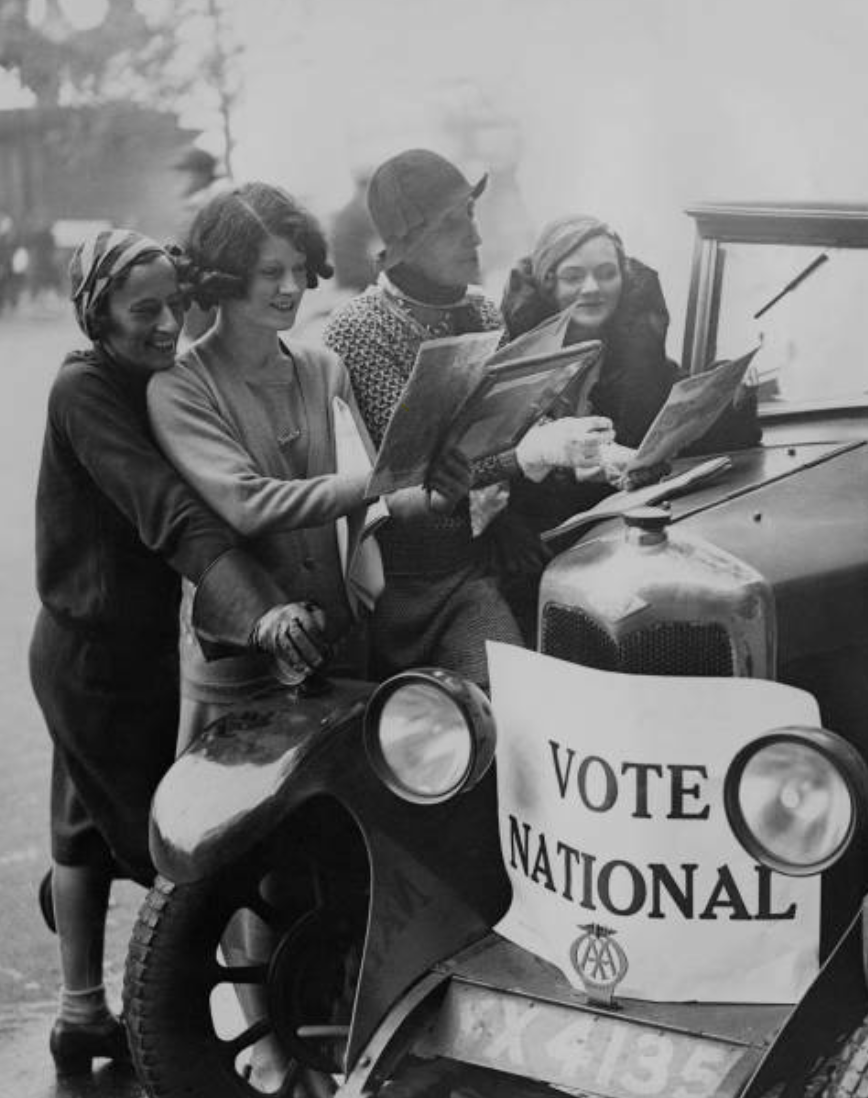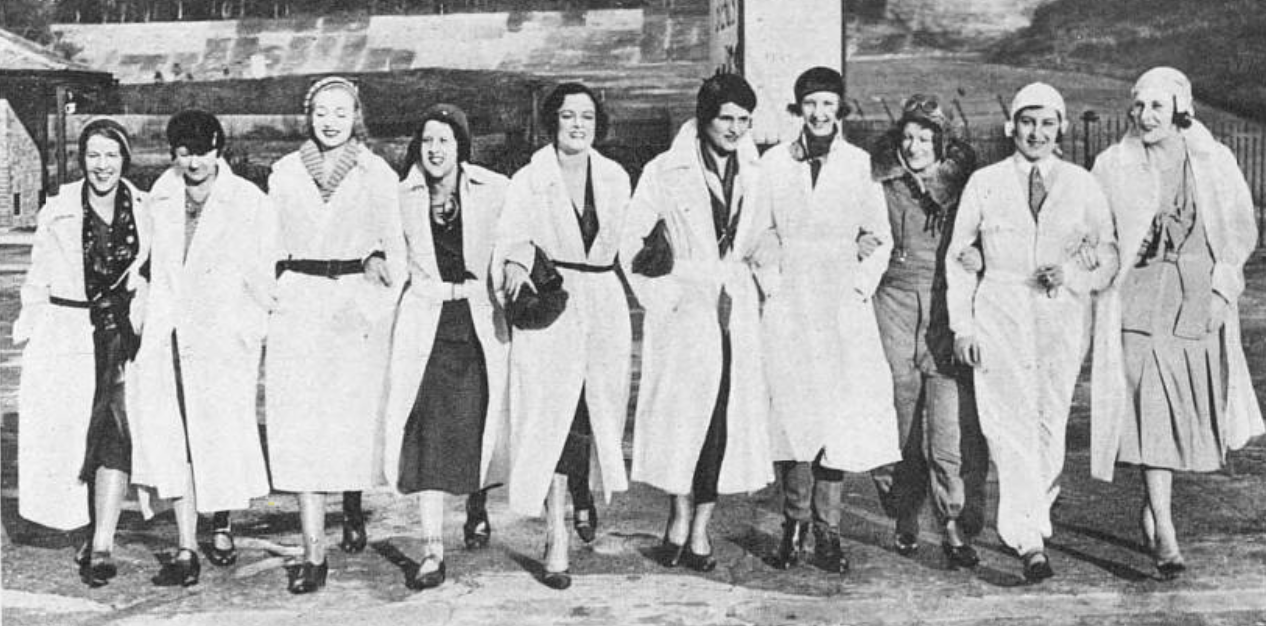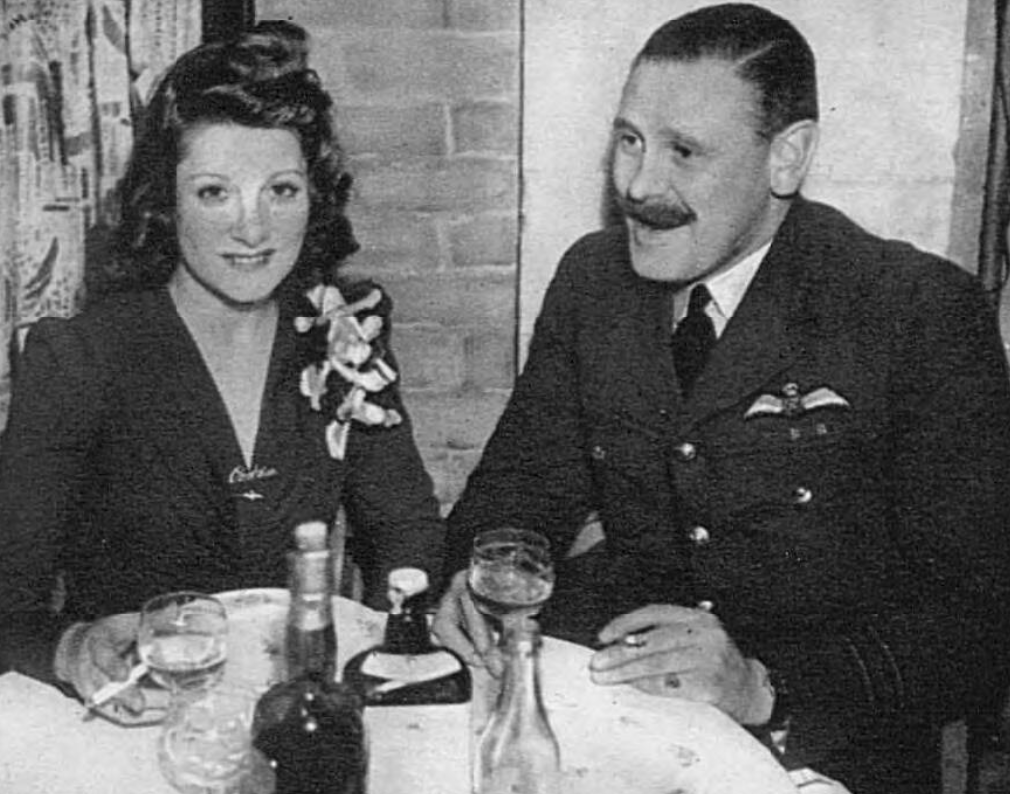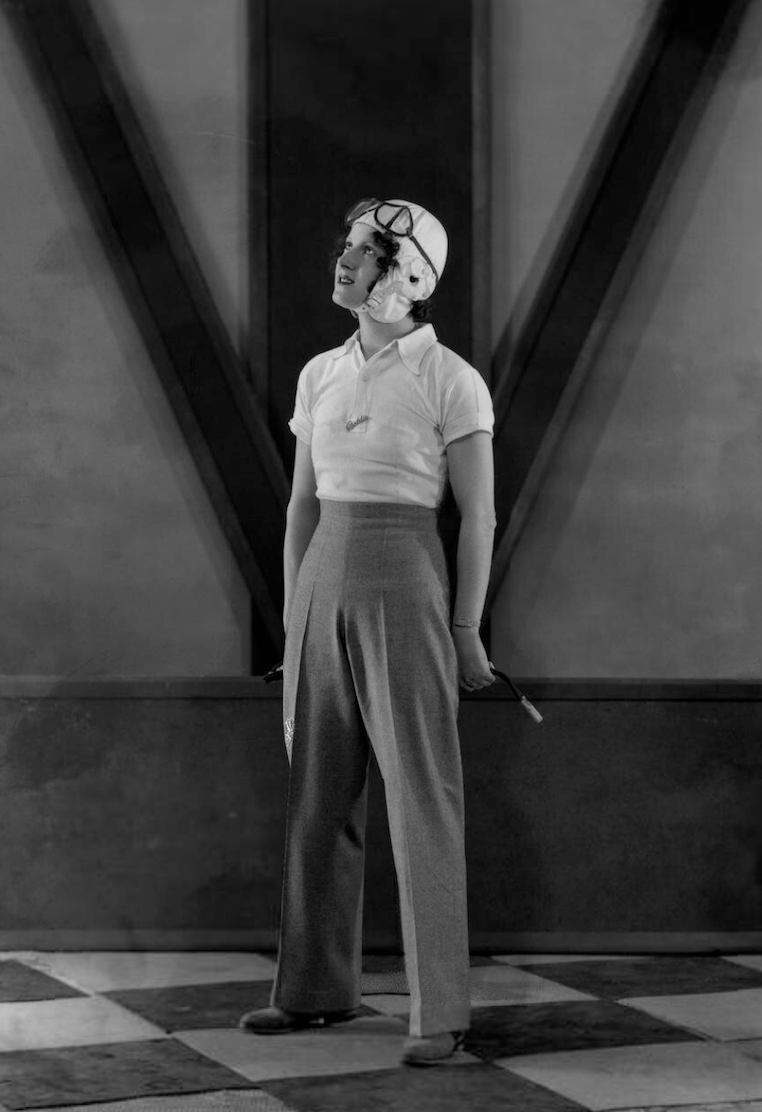
‘I am convinced that the modern girl has every bit as much stamina as the modern man.’ – 25 June 1930
Paddy Naismith was a stage and screen actress, a racing driver, a Labour party office holder and campaigner, a pilot, and Britain’s first air-hostess. Of Irish-Scottish parentage, she had a striking appearance with her red hair complemented by the green leather jacket and green overalls she wore when racing.
She was born Eirane Redmond Naismith in 1912, to John (also called James) Naismith (d. 17 May 1932) and Mary Frances Naismith (neé Redmond, d. 12 Oct 1940). Her mother’s side was from Wexford in Ireland. She had 5 siblings: one brother Desmond (b.1904) and four sisters: Sheila, Jillian, Juliet and Elizabeth. She was often accompanied by her siblings during races.
In the early/mid 1920s Paddy studied at the Italia Conti stage-school and went on to appear in small stage and screen parts as ‘Miss Eirane Naismith.’ In 1926 she understudied for Dorothy Dixon at the Winter Gardens.

Prior to her racing and flying career, she appeared in several films including the 1928 and 1929 short films ‘The Bravo’ and ‘Lady of the Barge.’ In its review of ‘The Bravo’, the Western Morning News described Paddy as ‘a British screen discovery… one of three girls selected out of over fifty who were tested recently, and Mr [W.W.] Jacob was very favourably impressed with her performance of an unusually difficult role.’
She also appeared in ‘The Iron Duke’ (1934) alongside George Arliss and it was reported that he recalled his short scene with her and later suggested she have a role in ‘The Guv’nor’ (1936.)
Reports of her involvement in the motorcar world first began in 1929, predominantly participating in rallies and long-distance trials and in the 1930s she started to enter track races. Amongst her many cars, she drove a Hillman Minx and Avon Standard around London and an MG Lagonda at Brooklands.

In 1929 she attended the Brighton Motor Rally and presented her car for the Concours d’Elegance. The papers described it as ‘a woman driver’s dream car – a symphony in the palest blue bordered by a neat cream line.’ The car had its own cocktail bar, a scent spray disguised as a bunch of roses, a needlework basket, a seat that turned into a bed, a box for cigarettes and an automatic lighter. Paddy and her sister, Phyllis, wore matching pale blue dresses with yellow collars and cuffs. They had driven all night to reach Manchester where they danced until midnight and then drove through the night to reach Brighton.
Later that year she took part in what was reported to be the first ‘women only’ motor-car and motorcycle trial with 54 women racing from Slough to Exeter. The following May, whilst competing in the Land’s End Women’s Trials Paddy told a reporter who accompanied her: ‘Don’t you think girls can do as well as men? With Amy Johnson setting the pace in the air and Diana Fishwick on the golf links, I think it is for us to show men what we can do on the road.’ Two months later she was taking part in the John O’Groats to Brighton motor rally with men and women taking part in 17 cars for around 40 hours of continuous driving. She was reported to be the only driver doing the 761 mile run entirely alone.


August 1931 saw Paddy take part in the Ulster Motoring Weekly competitive rally, driving non-stop for 500 miles. She drove a Standard Avon 9.8 and prior to the start enthusiastically announced: ‘It’s going to be great fun…the prospect of driving rigorously to a schedule alone all night does not dismay me in the least.’ She won the Ladies’ Cup and declared it ‘a splendid run.’
Showing her range of skills, she also won the Concours d’Elegance, wearing a dress of yellow broderie with a yellow and green raincoat to match her car and silver boots to match the wheel caps. The look was finished off with a small green umbrella.
Demonstrating her determination, she was one of the only four competitors in the 1931 London to Peak District women’s reliability trail who was able to finish after climbing the Yorkshire hills in dense fog. Her brother, Desmond, who was a passenger in the car declared it an experience he would ‘never forget.’

Given her frequent defence of the abilities of her gender, it was no surprise that she agreed to take part in a race that the novelist Barbara Cartland organised in response to a man at a party claiming women were poor drivers. This was her first time racing, rather than taking part in rallies or time-trials, and was the first all-women race held at Brooklands. The handicap event of three laps was won by Princess Imeretinsky in her super-charged MG, with Lady de Clifford as a mechanic. Paddy came third. She proved herself skilled at racing and in 1932 and 1934 she won the Ladies’ Handicap at Brooklands.

In early March 1932, Paddy set off on the 1,000 mile RAC Rally, driving from Scotland to Cornwall accompanied by her sisters, Juliet and Elizabeth. The Western Morning News reported that two things stood out: ‘the supremacy and efficiency of British cars and car equipment… and…the vindication of the woman driver.’ The report went on to describe the ‘outstanding example of the pluck of the women drivers…provided by Miss Paddy Naismith. [She]…had driven the car the whole thousand miles, and had been at the wheel for over thirty hours.’ Having driven one of the smallest cars in the rally, they arrived into Torquay with a buckled wheel and missing a wing.
Paddy’s siblings often accompanied her on long-distance rallies and Desmond was a test pilot and engineer who worked on the design for a 90mph helicopter for military purposes which Paddy was set to test-run in 1938. Elizabeth and Juliet married brothers Eric and Arthur Pereira, in 1936 and 1946 respectively. Jill and Sheila were actresses with small parts in several films and in 1938 many papers reported on the court case that Sheila brought against London Film Productions Ltd. after she had been badly burnt during filming of ‘Things to Come’ three years earlier. Paddy and Jill attended the court hearings where it was heard that Sheila had been ‘sitting on some grass waiting to go on in a ruined city scene and her clothing suddenly became ignited.’
In her private life, Paddy was reported to be going out with Derwent Hall-Caine in the late-1920s, and in 1929 it was incorrectly announced that they were engaged and their relationship ended around that time. But they remained friends and were often photographed together at car and air-events between 1929 and 1935. Up until 1935 Paddy was racing the Salmson car that Hall-Caine owned. His friendship with the family is evidenced by the fact he amended his will in 1970 to include ‘my friends, Desmond Naismith, his wife, Helen Naismith, and their daughter, Vivian….’. Although the following year he removed them and ‘Juliette Naismith and Mrs Jill Schubert Smith’ from his will.
After being fined at a 1934 Brooklands race for driving outside the lines three times, Paddy appears to have stopped attending racing events. But in 1935 she was inspired to beat Sir Malcolm Campbell’s land-speed record of 300mph and announced: ‘now, when women are demonstrating their ability to equal or exceed the records of men in every branch of sport, this land speed record is a thing which a woman ought to tackle.’ As there are no further reports, it seems probable that the attempt never took place.

Alongside her racing, Paddy was a keen Labour supporter and a close-friend of Ramsay MacDonald’s daughter Ishbel. She often drove Ramsay MacDonald during his time as Prime Minister and it was apocryphally stated that she had been appointed his official chauffeuse in 1929. During the 1935 general election campaign she worked at the party’s London headquarters and organised air and motor transport for key party members to use on the campaign.
It’s not clear when Paddy began taking part in the flying world but in March 1934 she entered the Handicap Air Race, flying a Leopard Moth and was accompanied by one of her sisters.
The following year she was announced in the papers as ‘Britain’s first air hostess’ following the trend started in America. She worked for the British Air Navigation Company (BANCO) and Imperial Airways.
There is surprisingly little information on Paddy’s activity during the war but she appears to have tried to join the Royal Air Force auxiliary but was too short. She also travelled to New York in 1942 hoping to qualify for a US license as an aerial navigator but she later returned to the UK to offer her services in driving ambulance planes.
That same year John Logie Baird used a photograph of her as the first colour television transmission image. One account suggests she was a visitor to the press demonstration and was selected for the test. Below is pictured the 1940 transmission (left) and Paddy at Baird’s laboratory in Sydenham.
In November 1941 Paddy married Wing Commander John Towers Mynors (d. 9 October 1965) at a private ceremony at Caxton Hall Register Office, attended only by close members of their families. It was reported that the couple had met several years earlier at Hatfield aerodrome. They likely moved in the same circles, with both attending the wedding of Martin Teall Flett and Mary Martin in September 1936.

Together they had one daughter, born in December 1945. In the 1950s there are reports of Paddy returning to the UK from Japan; it’s possible that her husband was stationed there. She died in London in 1965 but appears to have been living in Dorset. Her legacy was continued by her niece, Diana Patten, who was a pilot in the 1960s.

Some images © Illustrated London News / Mary Evans













My mother is Diana Patten also a red head! , she has written a book “Redhead in the clouds” her idol was Paddy and in her book she describes flying Ramsay MacDonald, she started up headcorn aerodrome after the 2nd world war which i run today.